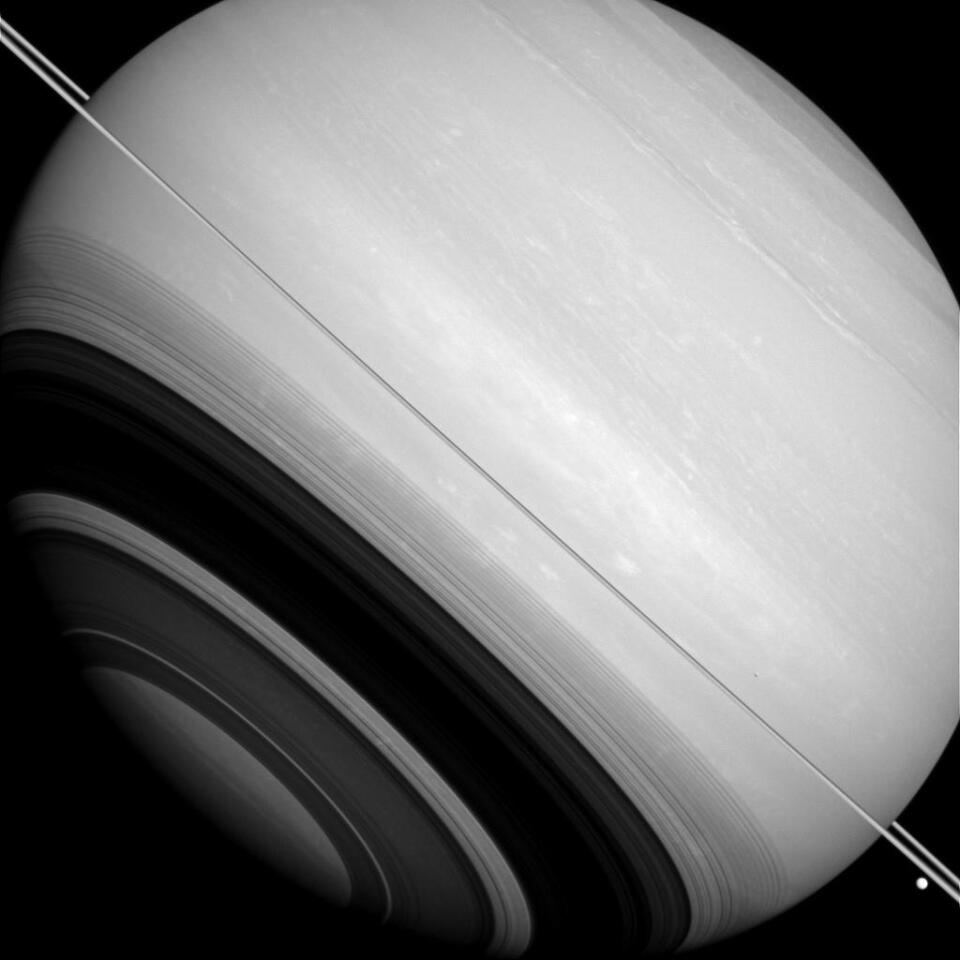NASA's Cassinispacecraft has captured a stunning, and seemingly impossible view ofSaturn's iconic ring system intersecting with a second set of phantomrings. The image was snapped using the probe's narrow-angle camera onFeb. 11, 2016.
Whilst a number of theplanets that make up our solar system boast minor ring systems oftheir own, none can compare with the majesty of Saturn's adornment.Since arriving in Saturn's orbit in 2004, the Cassini has sent back aregular stream of images of the gas giant's rings, and has performeddetailed analysis that has allowed us to unravel many secretsregarding the rings formation history, as well as its present-day characteristics.
For example, thanks toCassini data, astronomers have observed that some of the gaps inSaturn's rings can be attributed to the formation of socalled "shepherd moons." These satellite bodiesformed from the ring material, and maintain the gaps with theircontinued presence.
In the image at the top of the page, theshepherd moon Pan was captured from a distance of 1.2 million miles(1.9 million km), appearing as a tiny spec of white in the center ofthe image, as it maintained a divide in Saturn's A ring.
The appearance of asecond phantom ring is of course nothing more than an illusion. Whatyou are actually seeing is the sunlight side of Saturn's ring systemintersecting with its shadow, which is cast on the surface of the gasgiant below. The planet's rings vary significantly in opacity fromsection to section, allowing the shadow to be easily observed throughthe delicate structures.

Such a scene can beseen in a wider context in the image above. Here, Saturn's rings andtheir distinctive shadow can be observed playing across the disk ofthe planet.
Source: NASA










